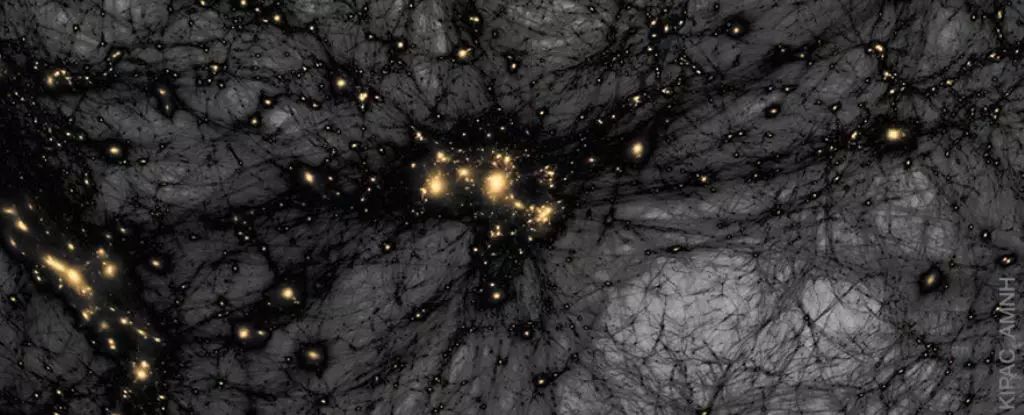In the ever-expanding field of cosmology, one significant puzzle has left scientists scratching their heads: the Hubble tension. This discrepancy arises from conflicting measurements of the universe’s expansion rate, with early cosmic observations yielding lower figures than local measurements. As we strive to understand our universe’s origin and evolution, it’s imperative to scrutinize this apparent paradox that threatens to unravel our understanding of fundamental physics. The standard cosmological model, despite its robust observational backing, appears slightly shaky under the scrutiny of Hubble tension. The implications of resolving this mystery could fundamentally alter our comprehension of space, time, and the very fabric of reality itself.
As intriguing as this tension is, the plethora of proposed explanations seems equally daunting. Skeptics of the standard model toy with ideas ranging from questioning the tenets of general relativity to denying the existence of dark matter altogether. Some even suggest radical concepts, such as a rotating universe or a variable rate of time. Yet, amidst the chaos of conflicting theories, a refreshing idea emerges that deserves our attention: what if dark matter itself undergoes evolution?
The Untapped Potential of Evolving Dark Matter
Traditionally, the concept of dark matter has remained steadfast, portrayed as an elusive substance that interacts weakly with light. Its existence is inferred from outstanding observational data, yet its direct detection continues to evade the scientific community. This lack of empirical evidence combined with the drive to dismiss dark matter as wholly incorrect has led to a limited exploration of its properties, including the potential for its evolution over time. A small band of researchers recently took a bold step in this direction, positing that evolving dark matter could be a more suitable model to address discrepancies in observational data.
This innovative perspective links evolving dark matter to the concept of evolving dark energy, suggesting that both are not mutually exclusive but rather intertwined in their interactions and implications. The authors of this new work argue that examining dark matter’s evolution could yield insights congruent with current observational data while simultaneously providing a fresh framework for understanding the cosmos. Instead of seeing dark matter through a rigid lens, this dialogue encourages us to entertain the possibility of vibrant, dynamic properties within dark matter itself, potentially shaking the very foundations of how we interpret astronomical phenomena.
A Dance of Particles: The Quirks of Oscillation
At the heart of this evolving dark matter paradigm is the tantalizing prospect of a changing equation of state (EOS) for dark matter particles. Imagine dark matter not as a static entity, but as a participant in a profoundly intricate cosmic dance—oscillating in response to the vast and diverse forces governing the universe. Drawing parallels to neutrinos, which exhibit mass oscillation, researchers propose that cold dark matter may likewise possess similar oscillatory behavior. This revolutionary framework opens the door to envisioning dark matter as more versatile, reconciling its properties with the peculiarities observed in our universe’s expansion.
Initial findings from this intriguing line of inquiry suggest that a universe composed of approximately 15% oscillatory dark matter could harmoniously coexist with 85% traditional dark matter. Such a balancing act could potentially address the Hubble tension dilemma, transforming our observations into a coherent narrative that remains consistent with the cosmic backdrop. While the current work is labeled a ‘toy model,’ indicating a preliminary exploration rather than a definitive answer, it undeniably challenges the conventional wisdom surrounding dark matter, pushing the boundaries of scientific inquiry into new frontiers.
Eyes on the Cosmos: Future Directions
The proposal of evolving dark matter is not merely an intellectual exercise but potentially signifies a paradigm shift in our quest for cosmic comprehension. As science continually advances, so must our willingness to adapt and consider alternative explanations that evolve alongside our knowledge. The implications of such a shift extend beyond merely resolving Hubble tension; they could reshape our understanding of profound concepts such as the structure of the universe, the nature of gravity, and the intricate interplay of forces governing celestial evolution.
Moreover, moving forward, a focus on evolving dark matter may foster increased collaboration among cosmologists, particle physicists, and astrophysicists. The existing divide between varying fields traditionally stagnates exploration, but integrating these disciplines could catalyze innovative research avenues that yield new experimental predictions and observational technologies. By keeping an open mind to evolution in our understanding of dark matter—whether literal changes in its properties or metaphorical shifts in our perception—we become pioneers, daring to redefine our narrative in the grand story of the cosmos. The universe, after all, may have more to reveal if we express the courage to explore beyond established boundaries.


Leave a Reply